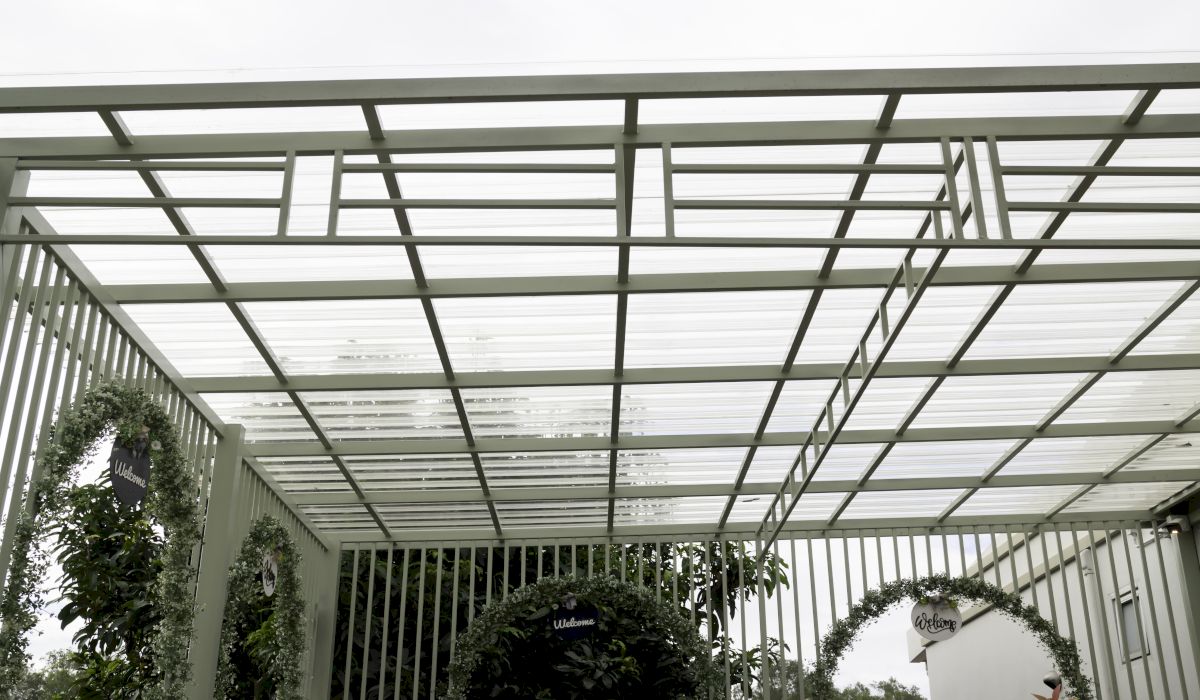When covering a terrace, the thickness of the polycarbonate sheet makes the difference between a material that lasts for years and one that deforms or cracks after the first hailstorm. If the sheet is too thin, you risk cracks, condensation, or loud noise during rain. If it’s too thick, you may end up paying more without a real benefit, especially if the terrace is already partially enclosed.
For example, a 6 mm sheet might be suitable for a terrace enclosed on two sides, but completely ineffective in areas with heavy snowfall. For exposed structures, you’ll need at least 8–10 mm, while 16 mm is the safer option if thermal insulation is also important.
Depending on how the terrace is built and how you plan to use it—seasonally or all year round—the right thickness should be chosen carefully.
How to Choose the Right Thickness: Key Criteria and Practical Examples
There is no universally “perfect” thickness. The best option depends on the intended use of the roof and the environmental conditions. Important factors include:
- Exposure to sun, wind, rain, or snow
- Type and strength of the support structure
- Whether the terrace is open or enclosed
- Your budget and how often you plan to use the space
For an open terrace, exposed to the elements, you need at least 8 mm polycarbonate. For good thermal protection and hail resistance, 10 mm is recommended.
For an enclosed terrace, such as a pavilion or lounge space, where long-term comfort is important, 16 mm is a good choice.
Recommended Thicknesses
- 4 mm – suitable for temporary shelters, shading systems, or decorative covers
- 6 mm – suitable for terraces shielded by walls, with minimal wind exposure
- 8 mm – the most commonly used thickness for residential roofing
- 10 mm – ideal for exposed areas or regions with heavy snowfall
- 16 mm – a premium option for superior insulation and extended durability
These values may vary depending on the type of polycarbonate used (multiwall, solid, or corrugated).
Types of Polycarbonate and How They Influence Thickness and Strength
There are several types of polycarbonate used for terrace roofing, and each behaves differently even at the same thickness.
Multiwall Polycarbonate
This is the most commonly used type for terrace roofing. It has internal air chambers that provide thermal insulation and added strength.
- Available in 4 mm, 6 mm, 8 mm, 10 mm, and 16 mm
- Suitable for lightweight roofs, curtain walls, and greenhouses
- Good impact resistance and pleasant light diffusion
- Available in clear, bronze, opal, and other finishes
- Recommendation: For regularly used terraces, choose 10–16 mm panels
Solid Polycarbonate
This is a fully compact sheet without internal layers. It resembles glass but is far more impact-resistant.
- Available in thicknesses from 2 mm to 15 mm
- Suitable for flat roofs, skylights, and durable canopies
- Recommended in areas with frequent hail or strong winds
- Allows more natural light than multiwall sheets
For an exposed terrace, 6–8 mm solid polycarbonate is a durable choice
Corrugated or Trapezoidal Polycarbonate
Ideal for quick installation, without the need for special profiles. Although it has an industrial look, it is increasingly used in residential projects.
- It is mounted directly on the supporting structure using recommended accessories
- Available in various thicknesses depending on the metal profiles used
- Suitable for new builds or lightweight roofing in residential or agricultural applications
Recommended for budget-friendly or seasonal terrace roofs
Other Important Factors Beyond Thickness
Thickness is important, but not the only consideration. For an effective terrace roof, also take into account:
UV Protection
All Pintaplast polycarbonate sheets come with UV protection on at least one side. This extends the lifespan of the product and prevents yellowing.
Material Color
- Transparent – allows the most light, but may cause a greenhouse effect
- Opal – diffuses light and maintains a more pleasant temperature
- Bronze/Smoky – blocks part of the sunlight, offering more shade
Choose based on your terrace’s orientation and how much shade you prefer
Installation System
A polycarbonate roof must be installed with proper profiles and sealing tape. Without them, dirt or water can accumulate inside the sheets.
Our range includes compatible mounting accessories, such as aluminum profiles and anti-condensation tape
Make an Informed Decision Based on the Entire Structure
What is the best polycarbonate thickness for a terrace roof? The answer depends on how the space is used, the level of exposure to the elements, and your expectations for comfort and durability.
In most cases, thicknesses between 8 and 10 mm are the most versatile. For a long-lasting result, don’t choose based on price alone—focus on functionality.
Whether you choose multiwall, solid, or corrugated polycarbonate, each has a specific role depending on your project.
Contact us for more details. Our experts can guide you in selecting the best material for your terrace. Make a smart choice and enjoy a long-term investment.
